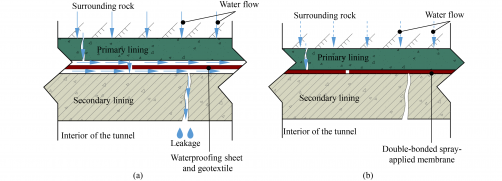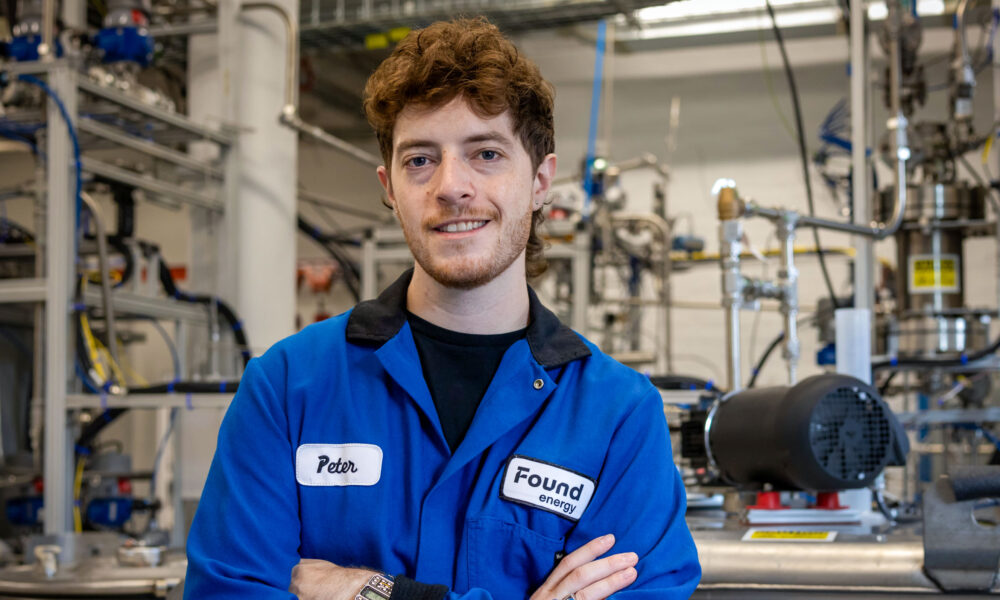In a significant advancement for tunnel engineering, researchers have developed a novel waterproof-drainage system designed to combat the persistent issue of water leakage in tunnels. This innovative approach, which relies on double-bonded waterproofing materials, aims to enhance structural safety and extend the operational lifespan of tunnel linings. The study, titled “A Novel Tunnel Waterproof-Drainage System Based on Double-Bonded Waterproofing Materials and Its Seepage Characteristics,” was conducted by a team including Xiaohe SUN and Chenghua SHI from Central South University, among others.
Addressing Long-Standing Challenges
Water leakage remains a critical challenge in tunnel operations, leading to accelerated wear on linings and potential safety hazards. Traditional waterproofing methods often utilize non-bonded waterproof sheets, which do not effectively adhere to tunnel linings. This design flaw allows groundwater to seep between layers, resulting in leaks that compromise structural integrity. In contrast, the new system employs double-bonded spray membrane materials that not only provide superior waterproofing but also support load-bearing capabilities.
The research team identified that while double-bonded materials effectively block interlayer water flow, they limit the application of conventional drainage methods in drainage-type tunnels. To overcome this limitation, the team introduced a localized drainage and pressure reduction concept tailored specifically for these materials.
Components of the New System
The proposed waterproof-drainage system consists of four main components. The first is the waterproof system, which includes a double-bonded spray membrane positioned between the primary and secondary linings, excluding the arch section, as well as secondary lining concrete.
The second component is the upper circumferential drainage system, which employs plastic drainage sheets situated between the membrane and the primary lining. Transversal guide pipes direct groundwater towards longitudinal pipes, ultimately channeling it to a central ditch. The third component is the bottom circumferential drainage system, which utilizes blind pipes to collect surrounding rock groundwater, routing it through vertical guide pipes to the central ditch.
Finally, the longitudinal drainage system integrates blind pipes, side ditches, and a central ditch, effectively connecting transversal drainage to expel groundwater from the tunnel.
To evaluate the system’s seepage characteristics, the researchers conducted numerical simulations and steady-state seepage analyses. Their findings revealed unique water pressure distributions in the secondary lining, characterized by a circumferential “mushroom shape” that decreases from the top of the arch to the bottom of the tunnel, and a longitudinal “wave shape” with the lowest pressure at circumferential drainage points.
Under typical conditions, including a water head of 160 meters and rock permeability of 10-6 m/s, the novel system demonstrated a maximum secondary lining water pressure of 0.6 MPa. This figure is significantly lower—by 65%—than the pressure observed in fully encapsulated waterproofing, which measures 1.7 MPa, and is 30% lower than traditional drainage systems, which registered 0.86 MPa.
Significant Findings and Implications
The research also confirms that the new system effectively reduces static water pressure by at least 40% in various groundwater environments. In ultra-low permeability strata (measured at 10-7 m/s), the reduction reaches approximately 85%. The study highlights that bottom blind pipes are most effective in high-permeability rock, while upper drainage sheets excel in low-permeability conditions, showcasing the system’s adaptability.
This innovative waterproof-drainage system, developed by Xiaohe SUN and colleagues, represents a significant step forward in addressing the challenges of water leakage in tunnel engineering. The full paper detailing these findings is available at https://doi.org/10.1007/s11709-024-1100-4.







